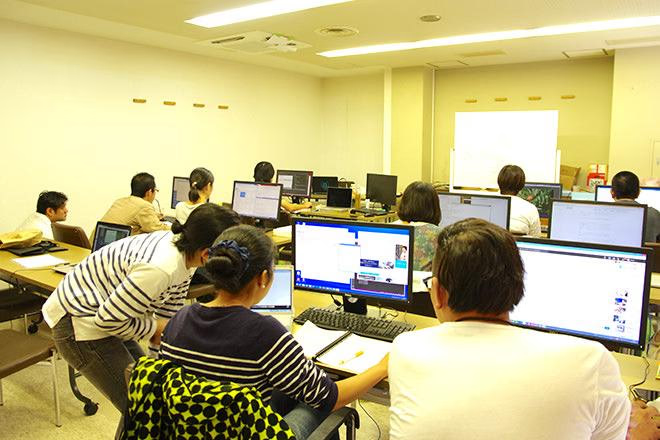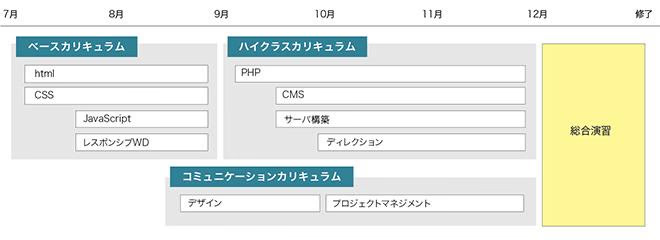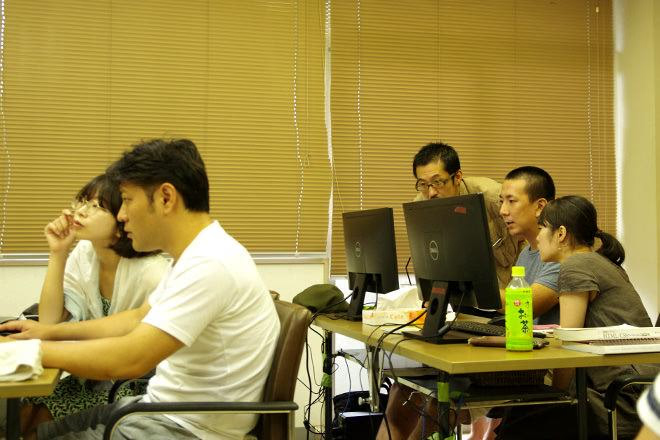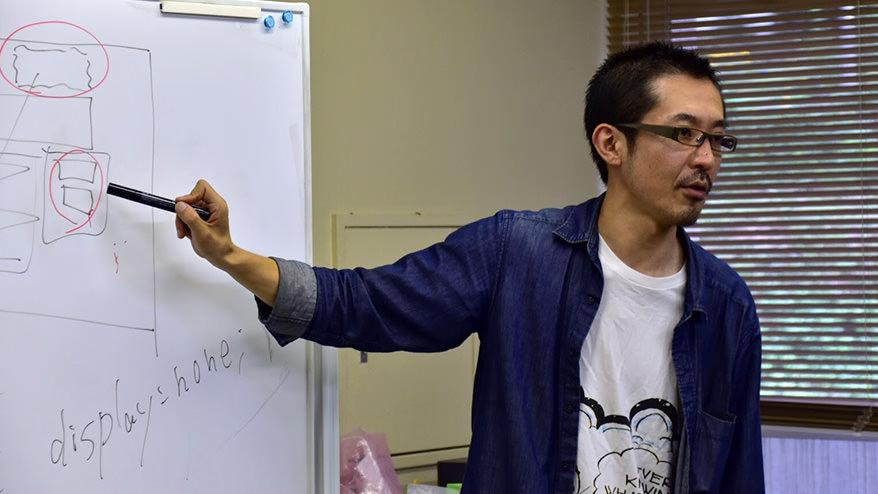こんにちは。神山ものさす塾・第3期塾長の伊藤です。
7月にはじまった塾も3ヵ月目に突入しました。全国から集まった10名の塾生たちも、一ヶ月のスキーランドホテルでの共同生活を終え、8月からはそれぞれが住まいを見つけて、新たな暮らしをスタートしています。
「Web制作はまったく初めて」というメンバーが大半を占める3期生ですが、この2ヵ月間で目覚ましい成長を遂げています。塾長、兼、講師として、塾生たちとがっつり向き合って過ごしながら、彼らの学ぶ姿勢や成長の様子に、私自身も大きな刺激を受けている毎日です。
そんな塾生達が、具体的にどんなことを学んでいるのか。
今回は、神山ものさす塾のカリキュラムについて、詳しくご紹介したいと思います。
今のWeb業界で、必要とされることを

徳島県の地域創成人材育成事業の一環として、3年前からはじまった「神山ものさす塾」。Web制作を学ぶ雇用型の職業訓練ですが、毎年カリキュラムの内容を変更しながら展開してきました。
第1期では html やcss を中心とした「コーダー」育成特化型の訓練。昨年の第2期は、html / css に加えて、ライティングや写真撮影なども加えた「Web ライター」育成特化型の訓練。そして第3期の今年は「フロントエンドエンジニア」育成特化型の訓練を行っています。
その理由として、昨今の Web制作の現場の変化が挙げられます。
従来、Web制作のフロントエンドといえば、html / css が書けることが基本でしたが、より高度で複雑なプロジェクトが増えるなかで、JavaScript や PHP のスキルはもちろんのこと、更にはサーバサイド、デザインに関する知見も求められるようになってきました。
しかし、それらを包括して担えるエンジニアは少なく、フロントエンド全般に関する知見を持ったフロントエンドエンジニアの必要性がますます高まっています。そこで、第3期ものさす塾では、このご時世に必要とされる「フロントエンドエンジニアの技能」を、約半年かけて習得していくものとしました。
<半年間のカリキュラム計画>

具体的には、以下のようなカリキュラムスケジュールで講義を進めています。
まず、『ベースカリキュラム』として、7月から8月までの2ヶ月間で、html / css / JavaScript といった、コーダー(マークアップエンジニア)としての基礎的な技術を習得していきます。
そして、9月からの『ハイクラスカリキュラム』では、PHP / CMS / サーバ構築 / ディレクション等のフロントエンドエンジニアに不可欠な知識、技術を広げていきます。
また、同時進行で『コミュニケーションカリキュラム』を学びます。ここでは、隣接業務を担う「デザイナー」「ディレクター / プロジェクトマネージャー」などの基礎的な業務知識を吸収しながら、ロールプレイ形式での実務演習・ワークショップも行い、隣接業務とのコミュニケーション能力の向上を図ることが狙いです。
そして最終月となる12月には、それまでに得た全ての知識・技術を動員して『総合演習』に臨んでもらう予定です。
個々の適性を活かしながら育成する
こうして見ると、カリキュラム内容の一つ一つは、取り立てて変わったところのない、王道とも言える学習内容となっています。しかし、半年という短い期間の中で学ぶ「カリキュラムの幅の広さ」という点においては、非常に濃密なものだと自負しています。
フロントエンドエンジニアは、html / css などの基礎的かつ奥深い領域に精通しつつも、デザイン (UI / UX)やバックエンドエンジニアリングの含蓄も備えた、いわば Web の「ゼネラリスト」とでも言える職種であるべきだと考えています。
これだけの内容ですから、正直に言ってしまうと、塾生達には、全ての技術・知識を完璧に身につけてもらうことを目標にはしていません。(もちろんそれが出来たら、エンジニアとしては無敵なのですが…)私の実感としては、個々の適性によって、おそらく以下の3タイプのように分かれていくだろうと想像しています。
A:ディレクタータイプ
進行管理などのディレクションを得意とするタイプ
・html / css / JS:★★★
・デザイン(UI / UX):★
・PHP / サーバ:★★
・ディレクション:★★★★
B:デザイナータイプ
UI / UX などのデザイン面を得意とするタイプ
・html / css / JS:★★★
・デザイン(UI / UX):★★★★
・PHP / サーバ:★
・ディレクション:★★
C:ギークタイプ
バックエンドも含めた高い制作スキルを持つタイプ
・html / css / JS:★★★★
・デザイン(UI / UX):★
・PHP / サーバ:★★★★
・ディレクション:★
このように、一人一人が自分の強みを活かしながら、フロントエンドエンジニアとしての一歩を踏み出せるように育成していきたいと考えています。
「現場」へ飛び出す日を楽しみに

先述のとおり、フロントエンドエンジニアは業務領域がとても広く、一人前と呼ばれるには、やはり相応の「現場での経験」を積むことが欠かせません。(これは、どのような仕事でも言えることですが)。
神山ものさす塾では、Web 業界で「質の高い経験」を積んでいくための「知識」「技術」を教えていきます。しかし、それよりも大事なのは、卒塾した後、そこからいかにキャリアを形成して一人前になっていくのか、塾生自身に明確なビジョンを持ってもらうことだと思っています。
塾生それぞれが、どのようにして自身の得意スキルを伸ばし、苦手スキルを補っていくのか、塾長としては今から楽しみでなりません。日に日に成長する彼らの姿を見ながら、「早く現場で働いてもらいたい…!」という欲求を抑えつつ、今日も朝からややこしいスキルを教える毎日です。

